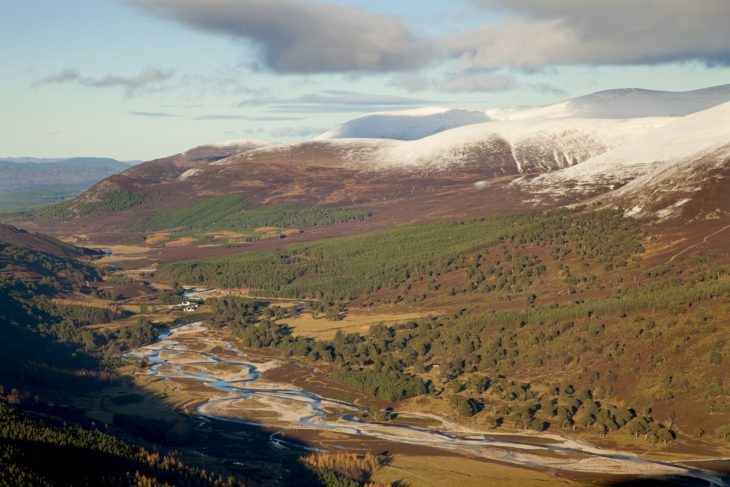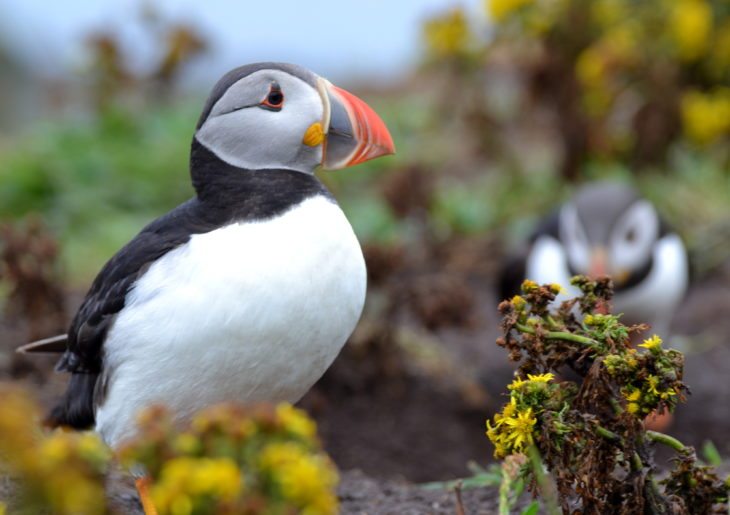Programme for Government 2019: A step change for biodiversity?
This year’s Programme for Government was awaited with keen interest by the Scottish Wildlife Trust following the commitment by both the First Minister and Cabinet Secretary for Environment, Climate Change and Land Reform that the climate emergency would be at its core. The First Minister had also recently stressed that the linked ecological crisis is as important as the climate emergency.
Initial reactions are that the Programme contains a significant number of encouraging elements but also some important omissions. However, there are still some windows of opportunity to come that could allow us to rise to the environmental challenges ahead.

A renewed focus on land use in Scotland
In recognition of the huge impact it has on both climate change adaptation and mitigation, the Programme for Government contained a much needed and renewed focus on land use in Scotland. It turns out that the Land Use Strategy has not been entirely forgotten and elements of it have been recognised as a way to support our efforts to tackle climate change. It is particularly welcome that Regional Land Use Plans will also now be undertaken for every part of Scotland, by 2023, to maximise the potential to contribute to the fight against climate change.
If Scotland seizes the opportunity to proactively restore our natural environment, we can reap huge rewards.
However, Scotland also needs to see these partnerships maximise the potential to reverse the loss of biodiversity. It will take significant effort to achieve this by 2023 but nature is our life support system and we cannot afford to continue to deplete it. On the flip side, if Scotland seizes the opportunity to proactively restore our natural environment, we can reap huge rewards – environmental, social and economic.
One announcement that could have real potential is the new approach to the Central Scotland Green Network. A blueprint for the network will be published, “providing a targeted map that identifies the best opportunities for greenspace projects that will deliver the biggest climate change and biodiversity benefits to communities across the central belt”. If this same approach could be rolled out at the national level in a timely manner, then we would take a big step towards ensuring that our habitats and ecosystems have the resilience required to make their full contribution to addressing climate change plus a whole lot more benefits besides.

Greater investment is needed to reverse the loss of biodiversity
It is refreshing that the First Minister again highlighted that: “Biodiversity loss and the climate crisis are intimately bound together: nature plays a key role in defining and regulating our climate and climate is key in shaping the state of nature.” However, the Programme for Government contained only a smattering of actions to back this up. There is an extra £2 million for the Biodiversity Challenge Fund, and a very modest commitment to increase woodland targets and peatland restoration. Taken together, these commitments lack the gravity of the First Minister’s comments. Hopefully, this is because more is to come.
The Scottish Government indicated that they are “carefully considering the recent IPBES global biodiversity assessment” and that they will report by the end of the year with an initial assessment of current activity and what more needs to be done. In their words, this “will inform a step change in our programme of work to address biodiversity loss”. It is now absolutely vital that we follow up these encouraging words with the necessary actions.
It is now absolutely vital that we follow up these encouraging words with the necessary actions.
In the run up to Tuesday’s statement, we emphasised to government that natural climate solutions – such as restoring peatlands, greening urban spaces, planting more trees, allowing natural regeneration of woodland, and enhancing the capacity of the marine environment to store carbon – were vital to addressing the climate and biodiversity emergencies. This Programme for Government has recognised some of these issues but is lacking in detail. In contrast, there is more focus and detail on reducing emissions – necessary but not sufficient in addressing the complexity of the twin challenges.
Our marine environment has a major part to play in combating climate change and this did not go unnoticed. We look forward to the publication next year of new research into the role that our marine environment can play by acting as a store of blue carbon. Also, the establishment of a new virtual centre to co-ordinate marine climate change science and research. We also welcome the repeated commitment to bring forward a national deep-sea marine reserve, as well as a number of measures to improve the management of inshore fisheries.

A healthy environment is a foundation for improved wellbeing
In her recent TED talk, the First Minister stated that “growth in GDP should not be pursued at any or all cost…the objective of economic policy should be collective wellbeing: how happy and healthy a population is…”. On Tuesday, the First Minister referred numerous times to economic growth so it will be important that her previous good intentions are not lost.
“The door is still open to deliver the investment in natural climate solutions that we would have liked to see, and which will help lay the foundation for improved wellbeing.”
To be fair, the Programme for Government report does refer to wellbeing but without recognising the obvious wellbeing benefits that biodiversity and a healthy natural environment bring. It would have been a good time to commit to refresh the Economic Strategy, to reflect the new focus on wellbeing and in particular how we will invest to protect and enhance our natural capital in the climate emergency.
The door is still open to deliver the investment in natural climate solutions that we would have liked to see, and which will help lay the foundation for improved wellbeing. The Infrastructure Commission and the Scottish National Investment Bank have been tasked with setting out priorities for investment in low emissions infrastructure by the end of this year. This must include a strategic approach and detailed plan as to how we will invest in our green and blue infrastructure to maximise the biodiversity and climate benefits.
If this can be delivered, it could yet prove to be the case that this Programme for Government has sown the seeds of a credible and robust plan to address the climate emergency and make a step change for biodiversity.
Dougie Peedle, Head of Policy
Help protect Scotland’s wildlife
Our work to save Scotland’s wildlife is made possible thanks to the generosity of our members and supporters.
Join today from just £3 a month to help protect the species you love.
Preface
This year’s Programme for Government was awaited with keen interest by the Scottish Wildlife Trust following the commitment by both the First Minister and Cabinet Secretary for Environment, Climate Change …
